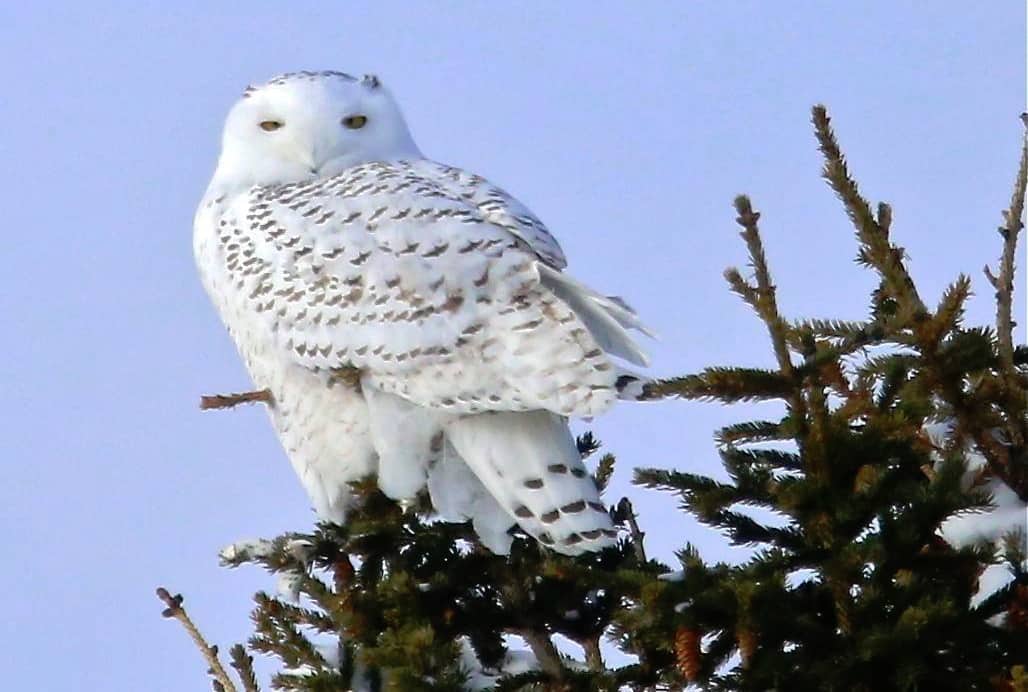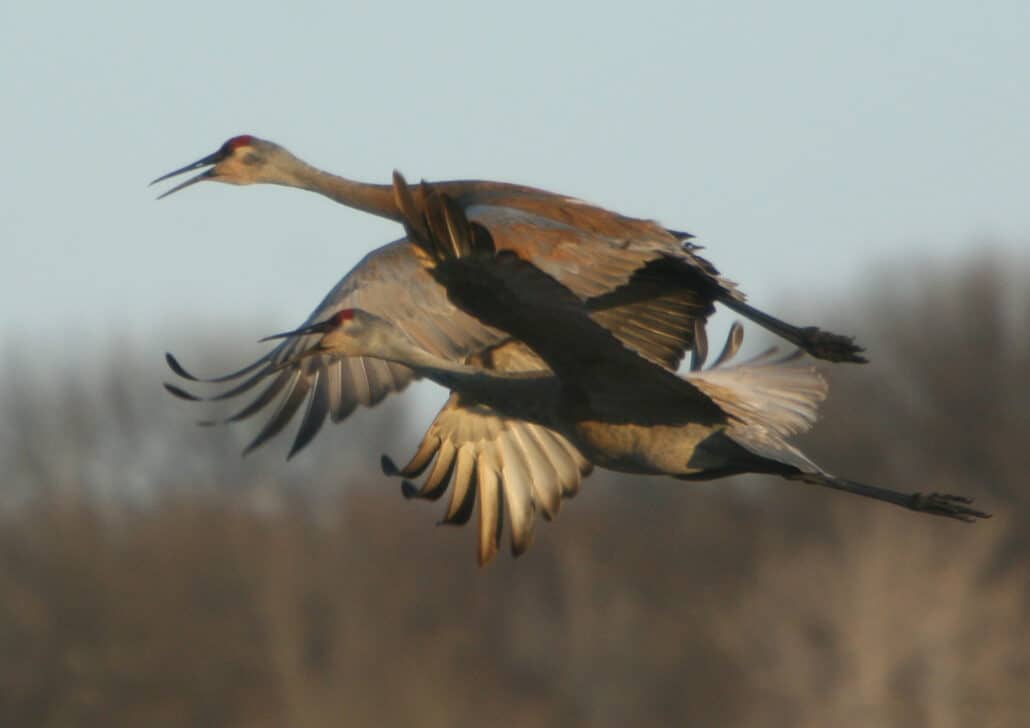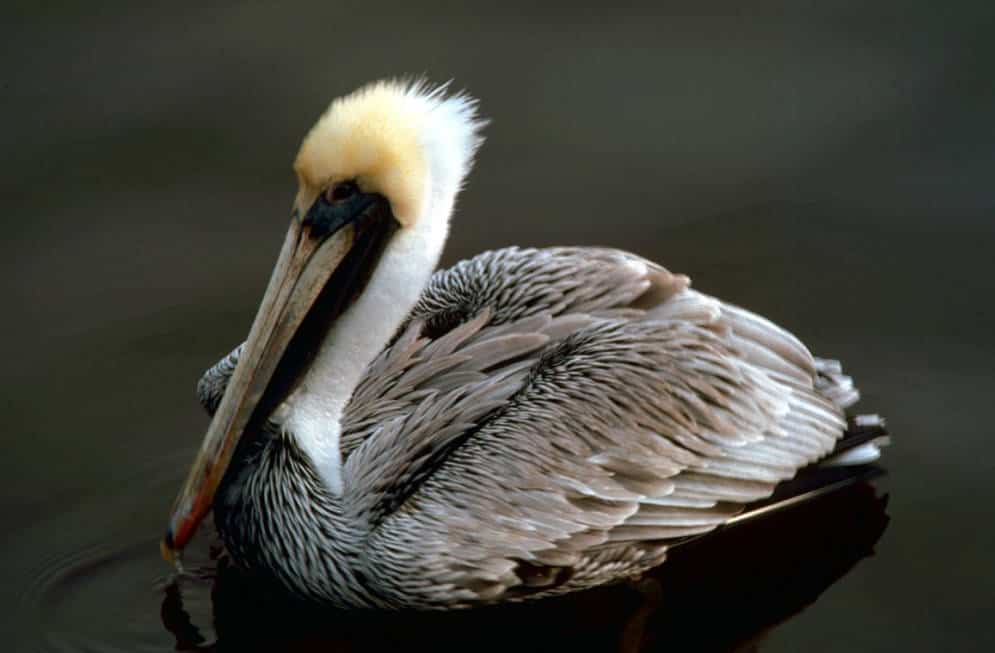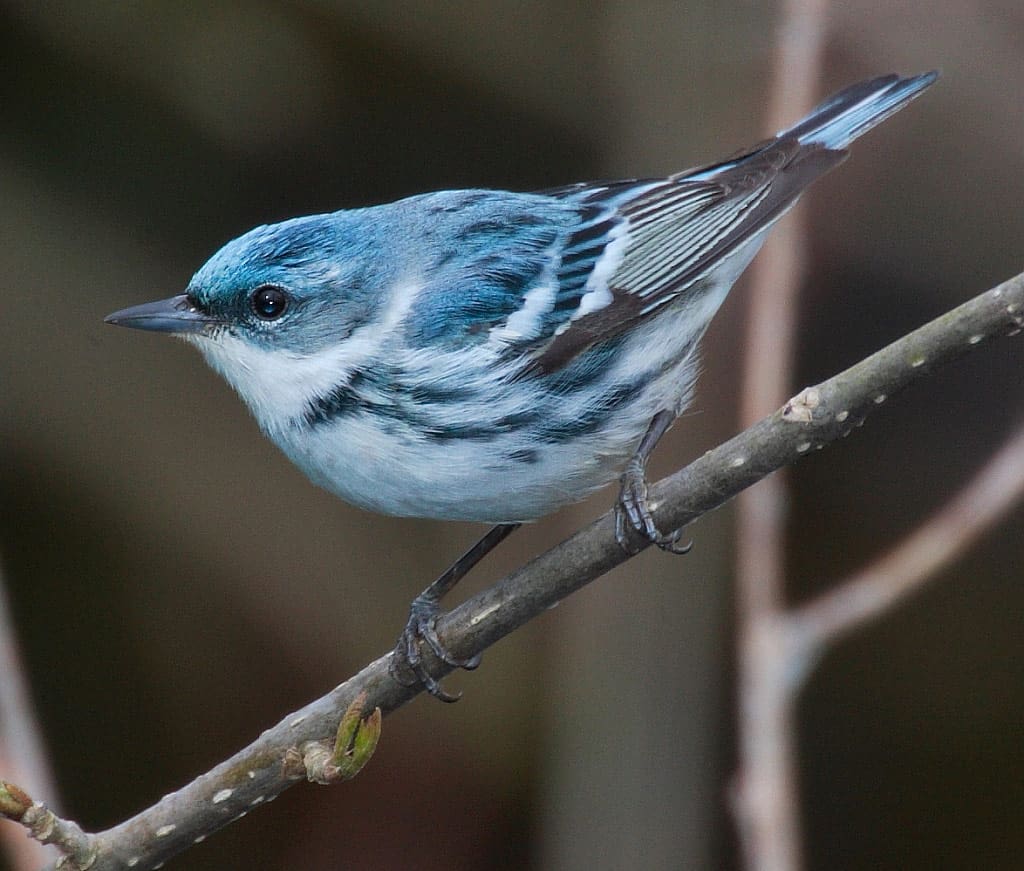Seeing a snowy owl is a rare privilege. Snowy owls are magnificent birds, and attract considerable attention when they visit the Lower 48 in winter. Enthusiastic observers and photographers should understand and remember that these birds may be stressed by hunger and long-distance travel. It is important to resist the temptation to get too close for a clearer look or better photograph.
Snowy owls that travel so far from their nesting territories are often inexperienced birds that hatched the previous summer. They wander south when food is hard to find in their Arctic habitat. Their southward journey requires a lot of energy, as does finding prey in unfamiliar territory.
Human disturbance can add significantly to their energy demands. The effects of disturbance can be obvious (causing a bird to “flush” or leave its perch) or invisible (making a bird too nervous to leave the safety of a high perch to pursue prey, or increasing its metabolism and stress).
While a single incident may not be life threatening, the cumulative effect of repeated disturbances, which are likely to occur when an owl perches in highly visible, public locations, reduces the likelihood that an owl will survive to return north to breed.
Observers and photographers should practice ethical bird watching by keeping a respectful distance. In general, if a bird reacts to your presence, you are too close. When an owl starts staring at you, you’re close enough, and it’s time to back up. For owls on the ground, this is about 100 feet.
Unless you have a 500mm or longer camera lens, please don’t count on getting a close-up of the owl. If you’re using a cell-phone camera, a close-up is impossible without disturbing the bird. Flushing the bird interferes with its roosting and foraging behavior, and deprives others of the opportunity to observe the owl.
An automobile makes an excellent blind, so watch from your car if possible. If this isn’t practical, approach the owl with the wind in your face. Owls take off into the wind, and if the bird chooses to fly while you are approaching it will not want to fly toward you. Always give the bird ample room, and back up as soon as it lifts, especially if it is flying in response to your presence.
Don’t get carried away by excitement, and always respect private property and “area closed” signs.
It is possible to love owls to death. Flushed birds have collided with stationary objects, and once airborne, they can attract the attention of crows, gulls, and hawks, which will pursue and harass them, reducing their opportunities to hunt, and further depleting their energy reserves. Be responsible, and give owls the privacy they need.
Set a good example for others by following and sharing these guidelines, and have a wonderful snowy owl experience!
This article was adapted from a page on New Hampshire Audubon’s website. To read the original article, please visit their site at nhaudubon.org »




